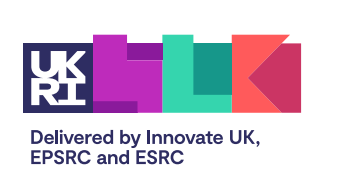The event began with a talk from Sir Dermot Turing, author of a number of books on his uncle Alan Turing, such as Prof, The Story of Computing, and most recently X, Y and Z – the real story of how Enigma was broken. Turing’s lecture set the scene for the day by looking at his uncle, Alan Turing’s, theoretical and foundational concept of computing. Turing explained how his uncle initially intended to develop a new part of number theory, hence why his theoretical paper on On Computable Numbers (1936) and did not conceptualise computers as physical hardware. However, during the post-war period, computing became digitalised to resemble the beginning of what we see today, as well as the development of early programming methods.
Turing’s talk was followed by a presentation from Dr Andrew Herbert, chairman of the board of trustees at the National Museum of Computing at Bletchley Park and formerly chairman of Microsoft Research. Herbert led the audience through the History of Computer Performance and Architecture. Participants were expertly guided through the history of computers, looking at EDSAC and EDVAC, the Elliot 903, as well as microprogramming and multiprogramming.
Dr Herbert’s presentation also explained where security fitted into all of this. Herbert noted that while these developments in computing were being made, security was not a priority, and one of the biggest issues with implementing security in the designs was that they did not have enough transistors. However, Herbert stated that this is no longer true in the modern age, hinting at what future possibilities could be in store.
Professor Genevieve Liveley, Senior Lecturer in Classics, University of Bristol and Turing Fellow, helped the audience understand how these possibilities could become a reality in her talk on ‘Looking Back to Look Forward’. Liveley explained how it is essential that we are not blinded by our present understanding of the world, and we should instead look to the future without hindrance or restrictions, imagining a future free of influence from current and past trends.
Liveley used historical examples of presentism – the view that only present things exist – to demonstrate how restrictive it can be when envisioning a future. One example was of French artists’ predictions of what the year 2000 would look like, which were published in a series of cards for the 1900 World Exhibition in Paris. These artistic imaginings only depicted the next century in terms of what already existed, and failed to look beyond the contemporary realms of reality. Another fitting example was of Thomas Watson, chairman and CEO of IBM in 1943, who claimed that there would only be a world market for five computers! Liveley demonstrated that by learning from the history of future thinking, we can enhance our future work in digital security by design.
The talks were concluded by Andrew Elliot, deputy director, cyber security innovation and skills, DCMS. Elliot discussed the current issues in computer security, explaining how the industry is focused on patching vulnerabilities, which puts responsibility on the users, not the producers. However, Elliot explained how actions are being taken to change this dynamic, with government efforts, such as the Product Security and Telecommunications Infrastructure (PSTI) bill, being put in place, but regulation alone is not the answer. Instead, we must implement security by design, as with the DSbD program, to stop vulnerabilities emerging at all.
This stop of the roadshow took participants on a journey from the start of computing right through to the present day, and into the future of security by design. At the next stop participants will learn about research and development Morello and about the technology application of DSbD and the value it can bring to different industry sectors.
For more information of the next event at the Glasgow Science Centre, 3rd March, and to book a free ticket to attend the event click here.
You can find out more about the Industrial Strategy Challenge Fund here





